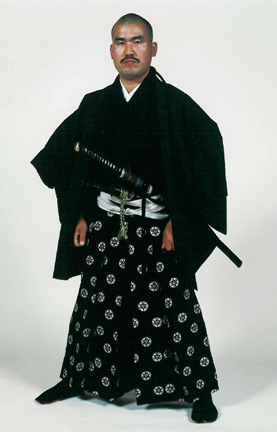The Kimono is the traditional clothing of Japan. The styles of Kimonos have changed over the last few centuries and today there are different versions worn by men, women and children. Did you know the color, fabric, cut and decorations of a kimono changes according to who is wearing it and why? Sex, age, marital status, season and occasion all are major contributors in deciding the style of Kimono you would want to wear. Ancient Japanese clothing particularly kimonos have evolved a lot through centuries.
From the primitive period of Jomon to Edo periods, the Kimono has changed with the changing life, climate and customs of the Imperial court. Other deciding factors of ancient Japanese clothing have been the continuous development in skills of weaving and dyeing and the availability of various new materials. The imperial family still wears clothes from the Heian period during coronations and weddings.
As per the ancient Japanese clothing norms men usually wore conservatively designed kimonos in blue, black, gray, brown or white. An Obi or sash around the waist was usually narrow and tied in a simple knot at the back. In summers you would find most people wearing a Yukata; it is a light weight cotton kimono mostly in white or navy blue colors. Women however may wear them in bright colors and floral patterns. During formal occasions or during practicing the martial arts, men wore a Hakama or pleated pants over their kimonos. A bridegroom would add a Haori or a jacket to his kimono and Hakama. This was held closed with braided cord in a decorative knot.
A woman's kimono differed depending on the age, social status, season and marital status in ancient Japanese clothing. A young unmarried woman would wear a Furisode or a colorful kimono with flowing sleeves up to the ankles. A married woman wore them with short sleeves. The Obi for a woman's Kimono could be as wide as 1 foot and 13 feet long and would take almost ½ hour to tie into elaborate styles! A bride would usually wear a white kimono covered with a red or orange over-kimono for the reception. The brighter patterns and prints in ancient Japanese clothing were for the children.
Modern Japan however incorporates both eastern as well as western clothing and mostly Kimonos are worn at home or special occasions. These are made in a very unique method; the fabric is at least 13 meters long and up to 15 inches wide and is cut into eight pieces, then sewn back to create the shape without wasting any of the fabric. Much of the fabric and embroidery techniques were originated in China. Soon, ancient Japan clothing evolved artistic styles and favored plain silks rather than the earlier woven and dyed designs.
Today the world over, people are investing in the ancient Japanese clothing: Kimonos and silk brocade blouses and jackets. These can easily be teamed with pants or skirts! You could buy Japanese fabrics in silk and cotton and have them customized to suit your needs; make a dress or a kimono or a shirt. The rich and pretty designs and the cut and styles complete with the Obi can never go wrong in styling you!













Post a Comment